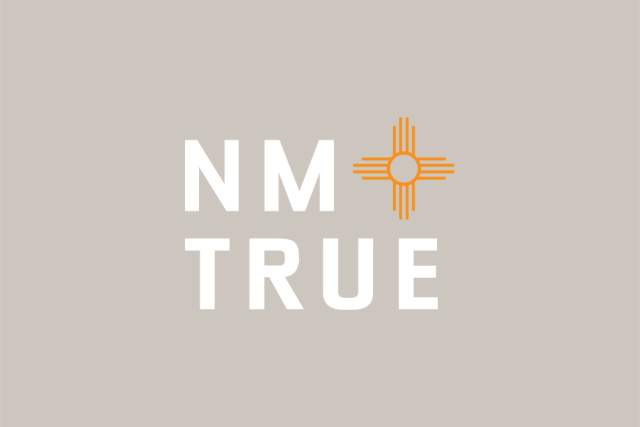Zuni Pueblo silversmith Jude Candelaria began preparing to open Flux Tufa Works in downtown Gallup just as COVID-19 swept across the country in March 2020. Despite some hurdles of operating during the pandemic, the business officially opened in August. Candelaria often works in the window so even passersby can see him casting his family’s signature jewelry in volcanic tufa molds. When safety precautions allow, he plans to continue in-person demonstrations and offer classes.
I always thought I was a fourth-generation silversmith. But I recently discovered that my great-great-grandfather was pretty famous for silversmithing as well. That makes me fifth generation. It was my great-grandfather, Juan Calabaza, who first designed snake jewelry, which has become something my family is known for.
I started helping when I was around 11. I would just do random things like polishing. I would sit there and watch my dad work. That’s how I learned, by watching. I was drawn to it as a career not only because I liked it, but I saw it as a way to be free and still make money.
I flipped my door’s OPEN sign on March 13, 2020. The next week, COVID-19 shut everything down. It was a scary situation for me because the whole reason for opening the physical location was to allow visitors to see me make the jewelry. I can also talk to customers while I make them a custom piece, and they can tell me what they like and don’t like as I make it.
I think seeing the jewelry made gives people a sense of where it comes from. I explain from the start that this was how the process was taught to me, and this is how my family has been doing it for five generations. Sometimes that lineage is hard to live up to. These people were amazing artists.
I’m lucky that I already have connections in the business because I’ve been in it my whole life. That’s how it is in Gallup; it’s a generational thing. I grew up playing football with the kids of trading-post owners. Now those kids are running their families’ shops, and I’m running my own jewelry business.
I use some of my family’s original designs, but I make them my own. For example, I don’t make my snake jewelry look like rattlesnakes. Also, my family would always calibrate a stone to a certain size bracelet. I leave my stones as close to the original size and shape as I can. I like the rough natural look.
You can think you know everything about the process, but there will always be a time when something melts or your idea doesn’t go according to plan. You have to be able to accept failure and scrap what you’re working on. What’s sad about that is the money you put into the piece, because silver costs money and turquoise costs a lot of money. I try to keep my pieces at a price point that people can afford because I want people to wear my jewelry daily.
At its heart, Gallup is a border town. It’s surrounded by reservation land—the Navajo Nation to the north, and the Pueblo of Zuni, 33 miles to the south. Gallup is the hub of it. People don’t often realize how many people flow in and out of this town on a daily basis. It’s the stop for thousands of Native Americans to come and get supplies. That separates Gallup from a lot of small towns.
I’ve thought about moving away from Gallup several times, but why would I do that? If I wanted to be in the movies, I’d go to Los Angeles or New York. That’s where the industry is. If you want to be in jewelry? You’ve got to be in Gallup. This is where it’s at.

